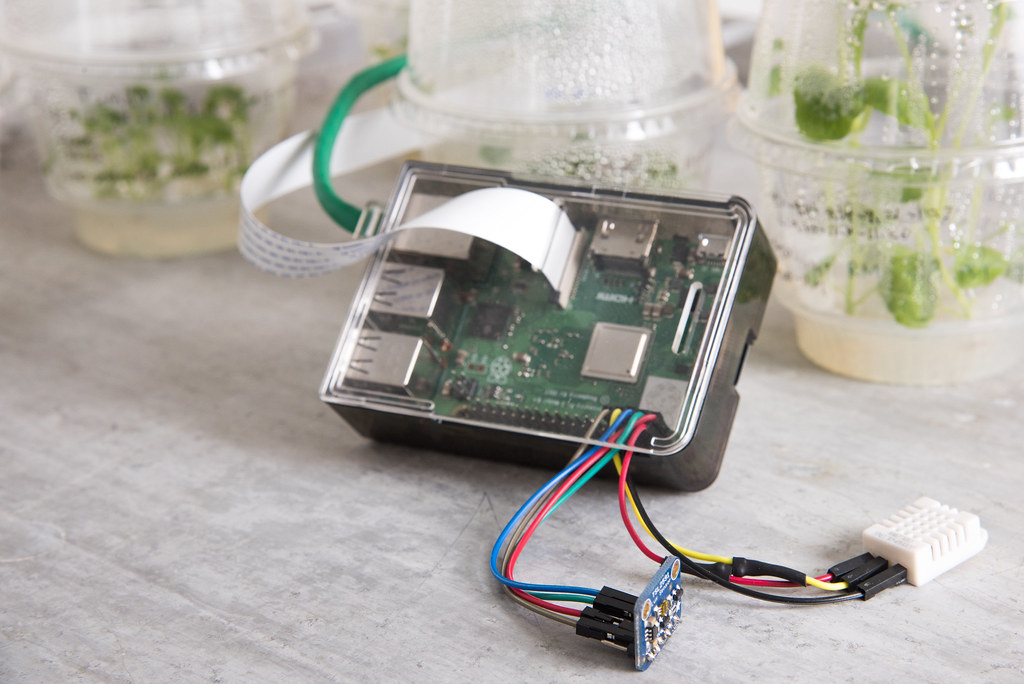
By Mariah Cox | Bond LSC
What does an iconic American dessert have in common with a credit-card-sized single-board computer? Well, only its name.
Small but mighty, the Raspberry Pi can be programmed for use in multiple settings and has been increasingly used for tasks in research labs.
But it took a scientific conference in Europe for one Bond LSC lab to tap into its usefulness. Makenzie Mabry, a doctoral candidate in the Chris Pires lab, found herself with the dilemma that she couldn’t monitor her research plants back home in the lab across an ocean. This predicament sparked an idea in biology undergraduate Brandin Grindstaff, who found the solution and the hands-on research opportunities he was searching for.
“Ever since I can remember I’ve been fascinated by biology and technology. Computer science is an important component of biological research,” Grindstaff said. “Programming, specifically, is a really powerful tool for a researcher and it can be indispensable for collecting data or solving problems that might be impossible without it.”
While computer programming was a foreign skill for Grindstaff, the unfamiliarity was a motivator. Grindstaff proposed an idea for a small plant growth chamber monitor to Pires and Mabry his final semester of undergrad and began development the following summer. The Growth Monitor pi (GMpi) tracks the functionality of designated room parameters, meaning if a light goes out or someone left the door open, it sends a Slack message to all members of the lab.

Without any prior experience working on Raspberry Pi’s, electronics, or with the Python program language, he spent a large chunk of time teaching himself.
“Every day was a new and interesting challenge interfacing the sensors and camera with the Raspberry Pi. I spent hours sifting through tutorials and Python and Linux documentation,” Grindstaff said. “After a few weeks, we got the first iteration set up for testing the growth chamber, but it would crash after only a few hours of automation because something was causing the code to break.”
This hands-on participation in a lab was hugely important to Grindstaff’s college experience. As a first-generation college student, he often found himself struggling to navigate higher education. Before his work on GMpi, Grindstaff spent time on other projects but had a hard time finding his fit. At that point, Grindstaff was about to leave the lab, but he saw the opportunity for the device and made his case.
“Chris and Makenzie took a chance on me because I was passionate about research, not because I had the best grades. The GMpi project would have been a tough sell to most mentors, but they gave me a chance,” Grindstaff said. “Education and internship opportunities need to be more accessible to everyone, especially first-generation college students.”
For Mabry, his mentor, the project was important because it was entirely led by one of her undergrads who eventually was first author on a journal publication.
“It’s really rewarding when I get my own stuff published, but to have someone that you’ve mentored be so successful, it’s even more meaningful,” Mabry said. “The value of undergraduate research is making sure people have those opportunities.”
Devices using the Raspberry Pi are becoming more prevalent in research settings to streamline lab processes. The core computer costs roughly $40 and GMpi’s attachments added up to $200. Other systems that are used to monitor growing environments typically cost thousands of dollars.
Grindstaff’s work in the Pires lab earned him attention from businesses who’ve asked him to develop similar devices. One year out of college, Grindstaff is still on the hunt for a job but in the meantime, he’s working on an expanded monitoring system for use in a commercial cultivation facility to track more environmental parameters and automate a large part of the cultivation process.
“Devices like the Raspberry Pi, open-source communities, and tutorial creators make this sort of technology accessible to everyone. You don’t really have to know anything about computer science to get started,” Grindstaff. “More than anything, I hope this project makes researcher’s lives a little easier, or even inspires somebody else to create something awesome.”
Grindstaff graduated from MU with a degree in biological sciences in 2018. His research was published in the Journal “Botanical Society of America” in Aug. 2019.

